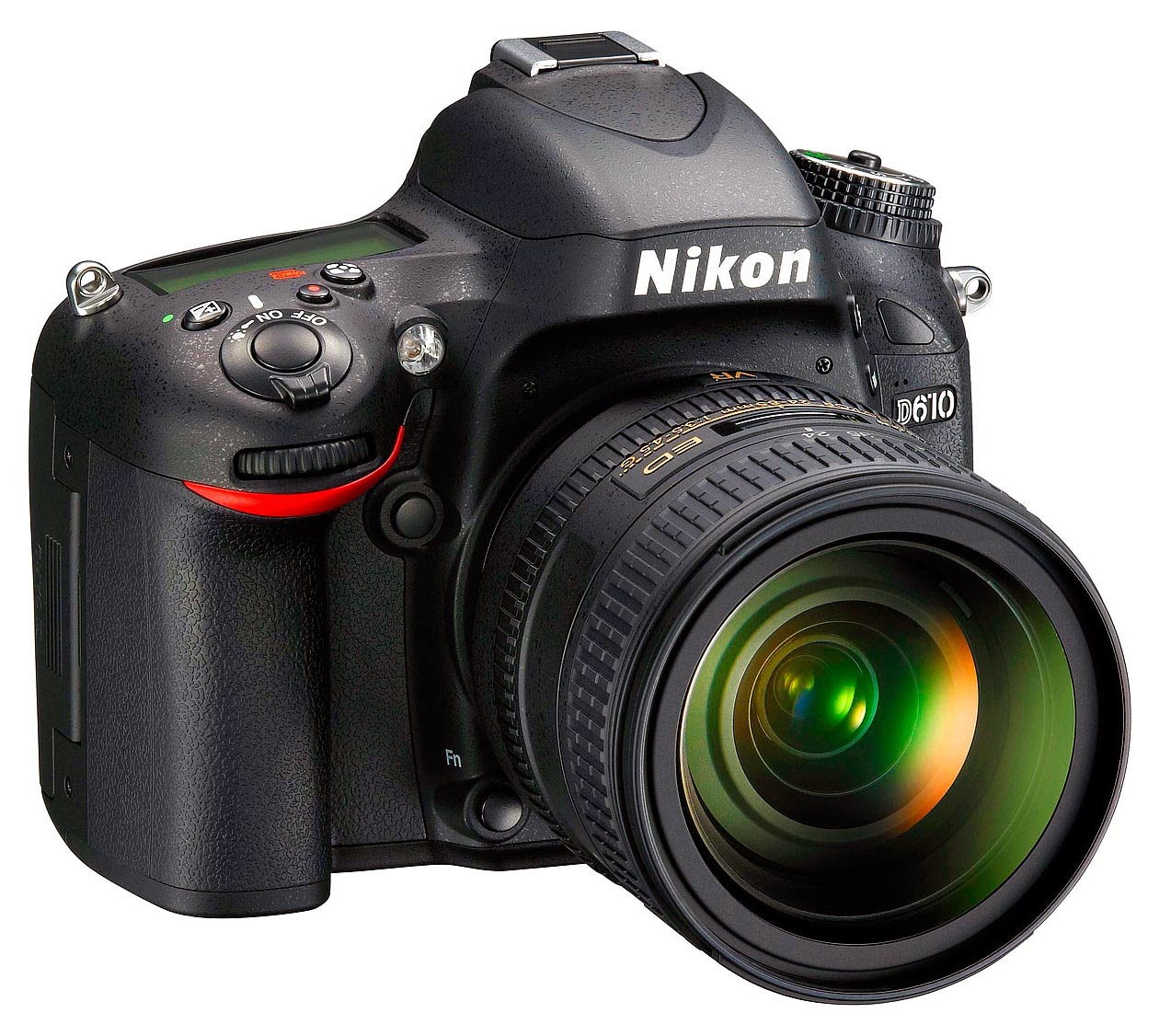 |
| Nikon F3 and D610: More in common than my D90. |
 |
| Nikon D610 Full-frame DSLR. The real article. |
There are some subtle differences, such as the fact that the F3 has a retractable indexing tab, which can fold down for use with non-AI lenses. This would have been a nice feature on the D610, but even I have to admit the likelihood that I’ll be shooting with pre-1977 Nikkor lenses is low.
On the other hand, the D610 can do something the F3 can’t; shoot with G-series lenses. With no aperture ring, and no means to set the aperture on the F3, all you can do with a G-series lens is shoot at the minimum aperture, rendering it pretty much useless.
I’ll also briefly mention the removable finder, which all came to an end in 2005 with the demise of the F5. This feature would allow you to not only change focusing screens on a whim, but swap out the entire finder for a different purpose if you needed to. Well, the good news is that you can still swap out focusing screens, even on the D610. Perhaps not on a whim, but will a little more precision and effort through the mount opening.
But the main thing is that AI, AI-S, AF and AF-D lenses are all interchangeable between both cameras, and if I really wanted to, I can shoot with a manual focus lens the way it was originally intended.
The Aperture Ring
The D610 and other models in its class bring back the traditional feel for SLR photography with this important feature. Through its f5 Cutomize Command Dials setting, it allows you to set either the aperture ring or the command dial as the means of changing the aperture. This gives a whole new dimension to working with D-series lenses, and with “chipped” lenses (having a CPU) you have the choice of either; previously you had to use the command dials to set the aperture, and that was that.
There are a number of other control features that left me saying, “Wow, Nikon is actually doing usability studies on their products and actually listening to the user!”
Release Button to Use Dial
One of the most annoying things about all those buttons is that you have to hold them in while you adjust their settings with the command dials. This often entails changing your grip on the camera, which is the most annoying part. With this feature set to “On”, you simply press the button for the setting you want to change once, then change it with the dial and press the shutter button halfway to lock it in. If you don’t want to use the shutter button, you can press the control button a second time.
This works incredibly well for changing the metering pattern, where reaching for the button with your index finger and working the rear command dial require a slight grip change. Now, I can reach over, hit the button and switch between the three settings at my convenience while I compose, all the while maintaining my grip. It takes nothing away since the next logical step is to press the shutter halfway to focus, which locks in the setting.
Just about every setting can be made this way with viewfinder confirmation. Even turning bracketing on and off can be done without taking your eye from the viewfinder.
Redesigned Auto Focus Controls
Split between using a control button and the menu screen, setting focusing on the D90 was admittedly arduous and confusing. Forget even trying to hold down the button while working the command dial. On the D610 however, this button is concentric with the auto/manual focus lever at the lower left of the lens, making it easy to press with your left thumb. And now, all the settings appear directly in the viewfinder. No need to go to the menus at all. Combine this with “Release Button to Use Dial”, and all the guesswork is taken out of selecting one of the fourteen different autofocus configurations.
Image Area
Nikon could easily have locked you out of being able to shoot full-frame with a DX crop lens, but they didn’t. Instead, they allow you to manually choose the size of the frame (either FX or DX) or set the camera to determine this automatically with CPU lenses. This means I can shoot with the super-sharp, ultra lightweight AF-S DX 35mm f/1.8 G in full-frame mode, and use in-camera cropping to simulate a 40mm f/1.8 lens. It also means I have a built-in 1.5X teleconverter when using FX lenses, which produces a rather excellent, uncongested 10MP image.
This brief session has only whetted my appetite for all that is to come. It’s a good time for photography.

No comments:
Post a Comment